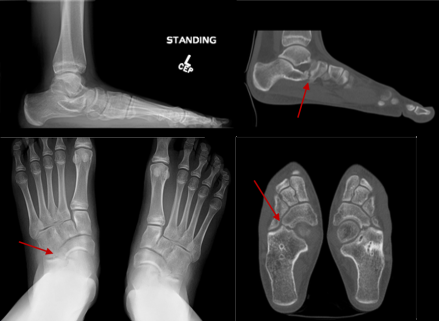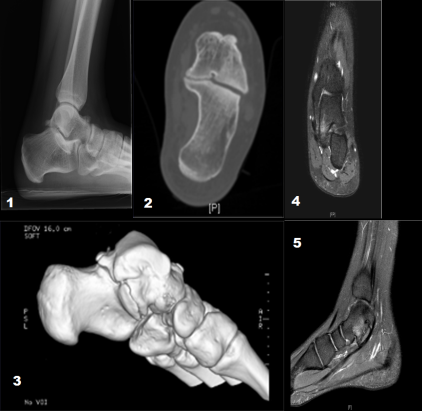- Several signs on plain radiographs are very suggestive of tarsal coalition such as:
- Flatfeet
- Abducted forefoot
- Ant eater sign
- Ball and socket ankle joint
- C-sign
- Talar peaking
- CT scan and MRI scan can confirm the diagnosis and rule other co-existing coalitions. They can also assess the adequacy of excision.
- MRI scan can also showed local inflammation and bruises.

Plain radiograph and Ct Scan of a child with bilateral calcaneo-navicular tarsal coalition. Notice the flat foot on the lateral view and the forefeet abduction. Also noted the tarsal coalition marked with red arrow.

Plain radiograph and CT Scan of a child with left talo-calcaneum tarsal coalition. Notice the talar peaking on the lateral view. The CT Scan nicely shows the exact anatomy of the coalition. MRI scan showed high signal in the area indicating bruises or inflammation.